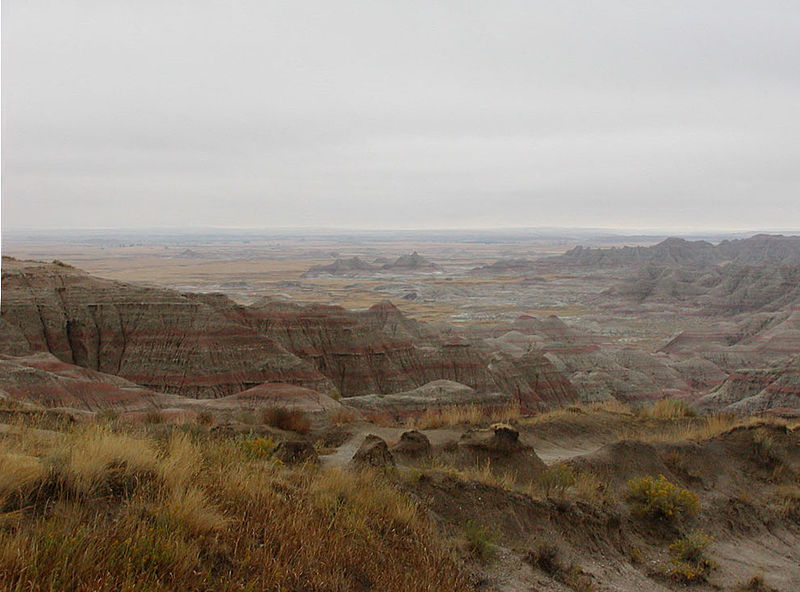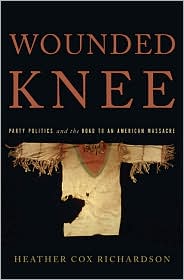My history book club met Wednesday to discuss Wounded Knee: Party Politics and the Road to an American Massacre by Heather Cox Richardson. I posted on the book a couple of weeks ago.
One of our members pointed out that Wounded Knee in 1890 effectively marked the end of the Indian Wars in the western United States. We had previously read The Comanche Empire by Pekka Hamalainen, and the Comanche too lost their empire in the second half of the 19th century (see post).
During the 18th and 19th centuries the Lakota had made huge cultural adjustments in the face of problems with diseases brought to the continent by European immigrants. Originally the tribe was located at the headwaters of the Mississippi, but moved west in part due to pressures from other tribes to their east.
They adopted a horse culture when horses became available, entered into trade relationships with Whites, adopted firearms and iron tools that they obtained through that trade, eventually developing fierce skills at hunting the American bison. They also developed a effective cavalry and controlled a considerable empire including significant portions of what are now five states. In the process they apparently managed to save their language and much of the tradition of their culture.
After 1890, however, the Lakota appeared to be much less successful as they sought to maintain those aspects of their culture that they most valued while adapting to their new circumstances and adopting technologies and institutions that would allow them to survive and prosper as individuals, families and as a people. Today the Lakota are among the poorest of Americans, suffering from very ill health.
The question is therefore, what happened to the Lakota? Why had a people who for centuries had successfully adapted to changing circumstances failed to do so in more recent decades? Basically, the dominant society of the United States wanted Lakota lands and took them, leaving the Lakota without the resources to progress. Essentially a people dependent on hunting and gathering ran into a modern industrial society and lost.
The Union and the Confederacy put some three million men in the field during the Civil War. The Union radically expanded the role of government, and new ways were found to finance that vast expansion. Following the war the United States experienced a vast industrial expansion. Railroads and telegraph networks expanded rapidly, tying the nation together. The financial system serving the private sector became much stronger.
The slogan "free labor, free land, free men" symbolized the desire of people to homestead and settle western lands. Railroads wanted rights of way, markets in the west for eastern goods that they could transport, and goods from the west that they could transport to satisfy eastern demands. Eastern lenders wanted profitable markets for their loans in the west. Miners wanted access to the newly discovered gold and silver deposits in the west. If the Lakota stood in the way of this avarice then they would have to assimilate, give way, or be pushed aside.
Politicians saw government action in the west as opportunity. Turning territories into states would allow them to obtain more votes in the electoral college and in the Congress in support of their party candidates and programs. Party leaders could make patronage appointments in the west, building support for the party. Office seekers could obtain salaries and -- too often -- opportunities for graft. Good government in the modern sense appears seldom to have been a major political objective.
The army had been greatly reduced in size after the Civil War but remained much stronger than any force that could be fielded by any Indian tribe. Its senior officers were Civil War survivors. It was comparatively well armed. Politicians saw deployment in the western Indian wars as good politics, not only because voters in the west appreciated the protection, but also because the military purchases created much appreciated markets for the goods and services of local residents. The army effectively used scouts from other tribes during the Indian campaigns, and often other tribes would join the army against tribes such as the Lakota who had been their enemies in inter-Indian battles.
The ecology of the plains changed. The buffalo were hunted out, and the plains were fenced and cattle ranching introduced. Recall that these were dry plains unsuitable for farming without irrigation, and the Lakota had no resources to develop irrigation infrastructure.
Native born whites who dominated the economy and politics of the United States had many prejudices. Jim Crow policies had triumphed in the south. There was antipathy towards the poor immigrants, notably the Catholic immigrants. Indians came very low on the hierarchy of ethnic groups, and they did not vote not did they buy much. The Yellow Press of the day did not help the Indian reputation with the white population.
 |
| Pine Ridge Indian Reservation -- would you want to try to make a living here? |
The Lakota were in disarray themselves in 1890. Some sought assimilation as the only way that offered hope of survival. Others has sought refuge in Canada to find that they preferred a return to the reservation. Others still hoped to resist the government and its army. Still others sought hope in the ghost dance movement. I suppose that it makes some cultural sense to simultaneously explore various alternatives when the strategy of the past seems to be proving disastrous. One supposes that they eventually chose the least objectionable in alternative.
Essentially, 1890 marked the end of resistance of the Lakota people against the policies imposed by the federal government and the military. The steamroller of "manifest destiny" had ended Lakota domination of what had been their territory, installing instead domination by white society and the distant government in Washington.
Thus for generations after Wounded Knee the Lakota were confined to reservations on the dry plains. They were dependent on often corrupt Indian Affairs agents for subsidies which proved inadequate. There was no industry in the region. When they proved successful at ranching, limits were placed on the number of cattle that they could own. There children were removed to schools (including the Carlisle Indian school in Pennsylvania) which were intended to "civilize" them, undermining their Lakota cultural identity. They were the subject of prejudice by their white neighbors and at best ignored by the government in Washington. Not surprisingly they were not able to find ways to thrive economically nor culturally in those circumstances.
 |
| Diane Sawyer on the Pine Ridge Reservation (check out the album of images) |

1 comment:
In the last paragraph, "there children" should be "their children".
Post a Comment